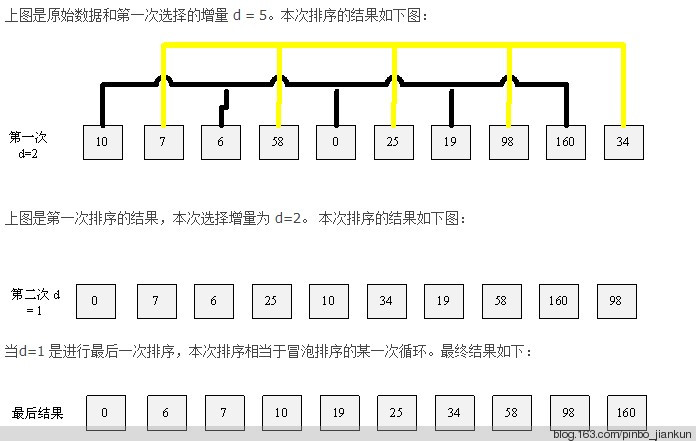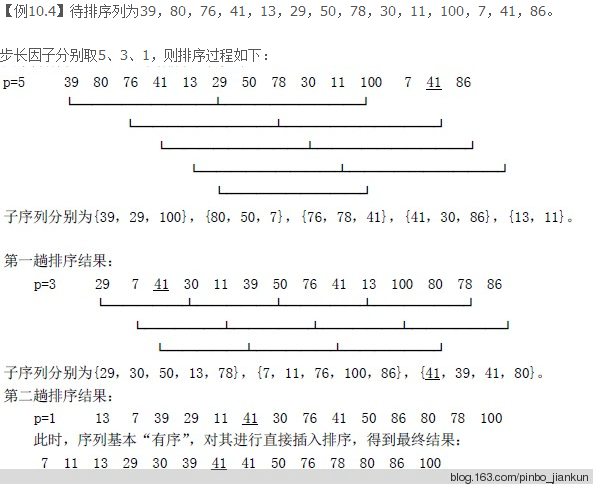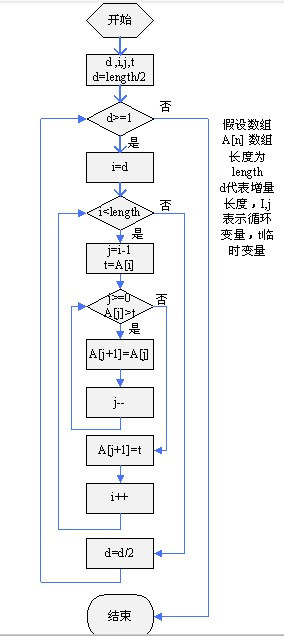C# Hill sort
C#Hill Sorting
using System;
using System.Collections.Generic;
using System.Linq;
using System.Text;
namespace Sort
{
class ShellSorter
{
public static int[] Sort(int[] a)
{
ShellSort(a);
return a;
}
public static void ShellSort(int[] myArray)
{
int i, j, increment;
int temp;
for (increment = myArray.Length / 2; increment > 0; increment /= 2)
{
for (i = increment; i < myArray.Length; i++)
{
temp = myArray[i];
for (j = i; j >= increment; j -= increment)
{
if (temp < myArray[j - increment])
myArray[j] = myArray[j - increment];
else
break;
}
myArray[j] = temp;
}
}
}
}
}Hill sorting is an improvement on the direct insertion sorting algorithm. Its main idea is to first divide the entire sorted sequence into several subsequences, and perform direct insertion sorting on the subsequences. , and then perform a direct insertion sort on all the arrays when they are basically in order. This is used to form a new ordered sequence. The general division method is that the distance between two elements is d=n/2, n/4, n/8...and so on.
1. Basic idea:
Divide the entire data elements to be sorted into several groups, and use the direct insertion method to sort the data elements in the same group; the number of groups is gradually reduced, and when all data elements are completed The sorting process ends after sorting within a group.
2. Skills:
The composition of the group is not simply "divided segment by segment", but the records separated by a certain increment dk are formed into a group, and the increment dk is shortened step by step (for example, 5 is taken in sequence, 3,1) until dk=1.
3. Advantages:
If the elements with small key values can be moved forward quickly, and if the sequence is basically in order, then direct insertion sorting can be used, and the time efficiency will be much higher.
Example one:


Example two:



Hot AI Tools

Undresser.AI Undress
AI-powered app for creating realistic nude photos

AI Clothes Remover
Online AI tool for removing clothes from photos.

Undress AI Tool
Undress images for free

Clothoff.io
AI clothes remover

Video Face Swap
Swap faces in any video effortlessly with our completely free AI face swap tool!

Hot Article

Hot Tools

Notepad++7.3.1
Easy-to-use and free code editor

SublimeText3 Chinese version
Chinese version, very easy to use

Zend Studio 13.0.1
Powerful PHP integrated development environment

Dreamweaver CS6
Visual web development tools

SublimeText3 Mac version
God-level code editing software (SublimeText3)

Hot Topics
 1386
1386
 52
52
 Active Directory with C#
Sep 03, 2024 pm 03:33 PM
Active Directory with C#
Sep 03, 2024 pm 03:33 PM
Guide to Active Directory with C#. Here we discuss the introduction and how Active Directory works in C# along with the syntax and example.
 C# Serialization
Sep 03, 2024 pm 03:30 PM
C# Serialization
Sep 03, 2024 pm 03:30 PM
Guide to C# Serialization. Here we discuss the introduction, steps of C# serialization object, working, and example respectively.
 Random Number Generator in C#
Sep 03, 2024 pm 03:34 PM
Random Number Generator in C#
Sep 03, 2024 pm 03:34 PM
Guide to Random Number Generator in C#. Here we discuss how Random Number Generator work, concept of pseudo-random and secure numbers.
 C# Data Grid View
Sep 03, 2024 pm 03:32 PM
C# Data Grid View
Sep 03, 2024 pm 03:32 PM
Guide to C# Data Grid View. Here we discuss the examples of how a data grid view can be loaded and exported from the SQL database or an excel file.
 Patterns in C#
Sep 03, 2024 pm 03:33 PM
Patterns in C#
Sep 03, 2024 pm 03:33 PM
Guide to Patterns in C#. Here we discuss the introduction and top 3 types of Patterns in C# along with its examples and code implementation.
 Prime Numbers in C#
Sep 03, 2024 pm 03:35 PM
Prime Numbers in C#
Sep 03, 2024 pm 03:35 PM
Guide to Prime Numbers in C#. Here we discuss the introduction and examples of prime numbers in c# along with code implementation.
 Factorial in C#
Sep 03, 2024 pm 03:34 PM
Factorial in C#
Sep 03, 2024 pm 03:34 PM
Guide to Factorial in C#. Here we discuss the introduction to factorial in c# along with different examples and code implementation.
 The difference between multithreading and asynchronous c#
Apr 03, 2025 pm 02:57 PM
The difference between multithreading and asynchronous c#
Apr 03, 2025 pm 02:57 PM
The difference between multithreading and asynchronous is that multithreading executes multiple threads at the same time, while asynchronously performs operations without blocking the current thread. Multithreading is used for compute-intensive tasks, while asynchronously is used for user interaction. The advantage of multi-threading is to improve computing performance, while the advantage of asynchronous is to not block UI threads. Choosing multithreading or asynchronous depends on the nature of the task: Computation-intensive tasks use multithreading, tasks that interact with external resources and need to keep UI responsiveness use asynchronous.




